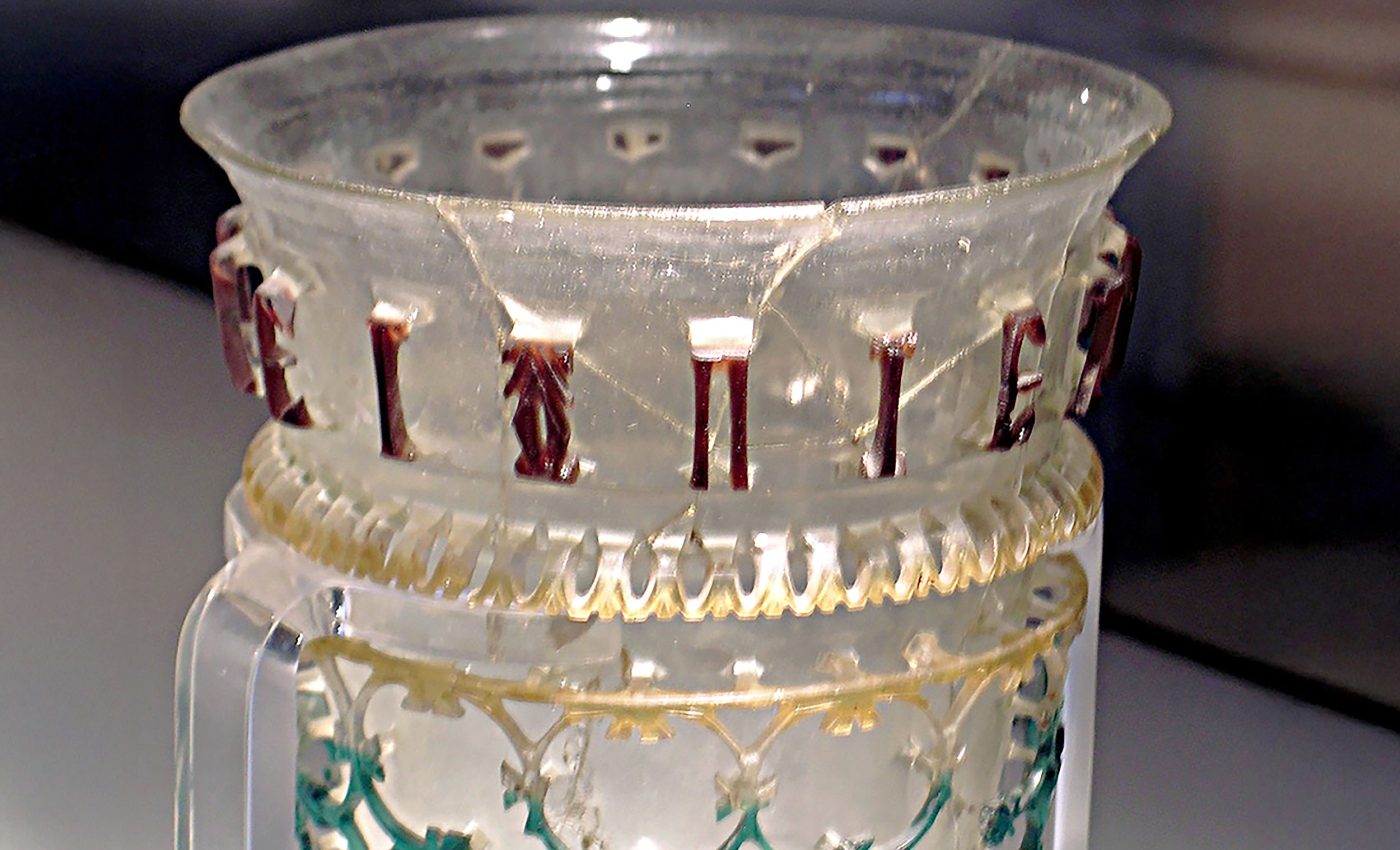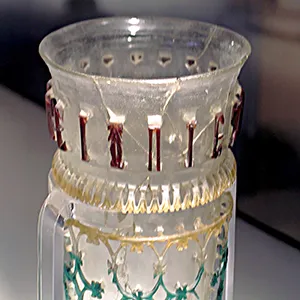
Archaeologists find beautiful Roman glass cups with unique, hidden messages inscribed
In a quiet gallery at the Metropolitan Museum of Art, a Roman glass cup surprised a visiting scholar one afternoon. Turning the vessel around revealed symbols hiding beside its inscription.
The patterns, carved into cups made about 1,600 years ago, link a handful of rare glass vessels to specific teams of craftspeople. Instead of a few lone geniuses, the cups point to organized workshops working across the late Roman world.
Roman cups reveal hidden clues
One example is a diatretum, a luxury Roman glass cup with a pierced outer cage. Its front carries a blessing; its back includes small shapes beside the letters.
The work was led by Meredith, an art historian and glassblower at Washington State University (WSU). Her research centers on late Roman craftworkers and the social life of carved glass.
“Because I am trained as a maker, I kept wanting to flip things over,” said Meredith. Those shapes were long dismissed as meaningless ornament by later viewers.
After that 2023 visit, Meredith began to track the same symbols across museum collections. She compared tool marks and layouts, finding repeated habits that point to shared training.

How Roman cups were carved
A cage cup is carefully carved so its outer layer becomes openwork, decoration made by cutting full holes through the glass by hand. The Lycurgus cup at the British Museum dates to the 4th century CE and famously shifts color.
Scholars have documented about 100 openworked vessels from this tradition. A recent note reports that only seven inscribed cups carry an abstract symbol within their lettering.
Earlier debates asked whether cage cups were cast in molds or carved only after forming by skilled carvers. Later archaeometric tests, scientific lab work on ancient glass, support the carved interpretation.
Each blank had to become two thin walls linked by narrow bridges. Unfinished pieces show the steps for shaping, polishing, and engraving, along with the many risks of breakage at every stage.
Marks reveal makers
On several cups, the symbols appear as small leaves, angled diamonds, or paired horns. Meredith argues they function as a makers’ marks, small signs identifying a workshop rather than an individual.
She frames this as an imagistic script, visual symbols that behave like a compact writing system. A single sign could link cups made in different places back to a shared shop over long distances.
Three cups from Cologne and a private collection share nearly identical marks and lattice details. Their repeated drinking wishes, carved in Greek or Latin, reinforce the idea of coordinated production across time.
“They were the ancient equivalent of a brand,” said Meredith. That claim reframes authorship as collective rather than solitary.
![Roman glass openwork vessel with a detail of its symbol on the right. Inscription: BIBE V[I]VAS I[..]A (Drink may you live I[..]a!) Credit: Corning Museum of Glass/WSU](https://cff2.earth.com/uploads/2025/11/20081229/glass-vessel_ancient-rome_hidden-signatures_dirty_WSU_1s.webp)
Teamwork in production
To gauge how many people were involved, Meredith reads fragments and rejects alongside pristine cups. In her broader article she shows that engravers, polishers, and assistants handled different stages on the same vessel.
Another line of work reconstructs the chaine operatoire, the step by step operational sequence behind a finished object in careful detail. One study uses abandoned fragments to reveal experiments, errors, and midstream adjustments.
Her analysis highlights a cup from a tomb at Autun in France that bears a careful hot glass repair. Residues inside point to ambergris, a fragrant waxy substance from sperm whales used in luxury perfumes.
Together, these clues make a lone master working start to finish unlikely. Time, risk, and cost point to coordinated teams, with a workshop mark serving as a shared signature.
![Glass openwork vessel excavated at Cologne dating to around 350–400 CE with an image of an inscription on the right. Inscription: BIBE MVLTIS ANNIS (Drink [may you live] for many years!) Credit: State Collection of Antiquities and Glyptothek, Munich. Photos by Christa Koppermann](https://cff2.earth.com/uploads/2025/11/20081214/glass-vessel_ancient-rome_hidden-signatures_BIBE-VIVASA_WSU_1s.webp)
Lives of artisans
In many histories, patrons and elites dominate, while makers of materials fade into the background. This research shows that artisans chose designs, inscriptions, and multilingual messages on these luxury objects.
Her upcoming monograph explores the lives of late Roman glassworkers and related trades as a social history. The project examines how these workers organized, shared skills, and navigated changing markets and social expectations.
Teaching feeds the same goal of visibility. She runs a course titled Experiencing Ancient Making, where students study objects through close looking and basic making in the studio.
Class sessions probe how production choices shape what survives, from tool marks to broken rejects. The aim is to treat craftworkers as historical actors with expertise and constraints, not just invisible labor behind elite commissions.
Why symbols on Roman cups still matter
Small signs in glass might seem narrow, but they reshape how scholars understand communication in late antiquity. Workshop marks link finds across regions and reveal training networks absent from surviving texts and guild records.
“There’s been a static picture of people who do the work,” said Meredith. They also shift attention from technology to the people who controlled it.
These marks also help answer questions of origin and date more precisely than style alone allows. When the same symbol appears on far apart finds, it ties them to a single workshop chain.
When light catches the lattice of a Roman cage cup, it reveals more than a technical trick. The shadows and symbols point back to the skilled teams whose quiet marks are finally being read with fresh eyes.
The study is published in World Archaeology.
—–
Like what you read? Subscribe to our newsletter for engaging articles, exclusive content, and the latest updates.
Check us out on EarthSnap, a free app brought to you by Eric Ralls and Earth.com.
—–













